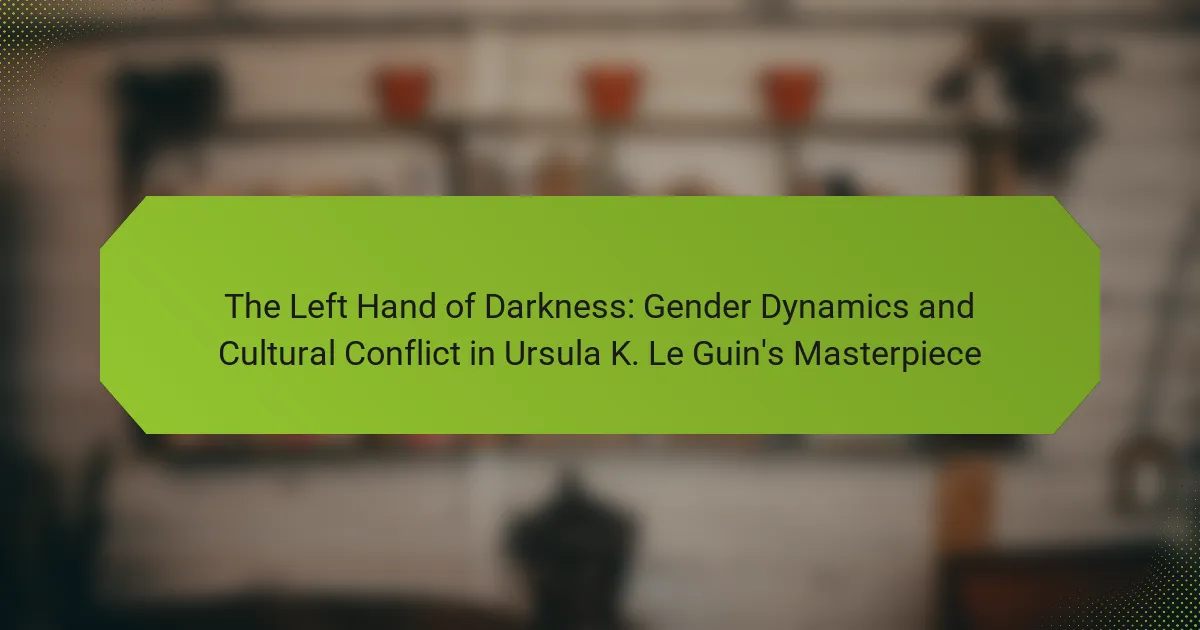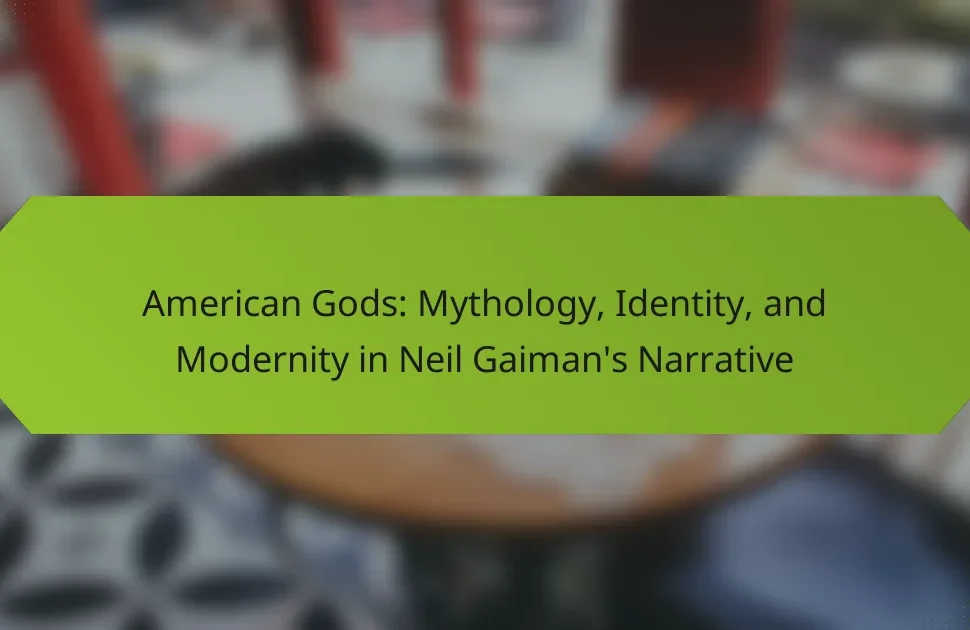Ursula K. Le Guin’s “The Left Hand of Darkness” challenges traditional gender norms through the androgynous Gethenians and their fluid identities. The novel explores cultural conflicts arising from these dynamics and the political struggles between Gethen’s nations. Key themes include the complexity of identity, the impact of societal expectations, and the implications of cultural relativism. Le Guin’s narrative techniques deepen the exploration of these concepts, influencing contemporary discussions on gender and representation.
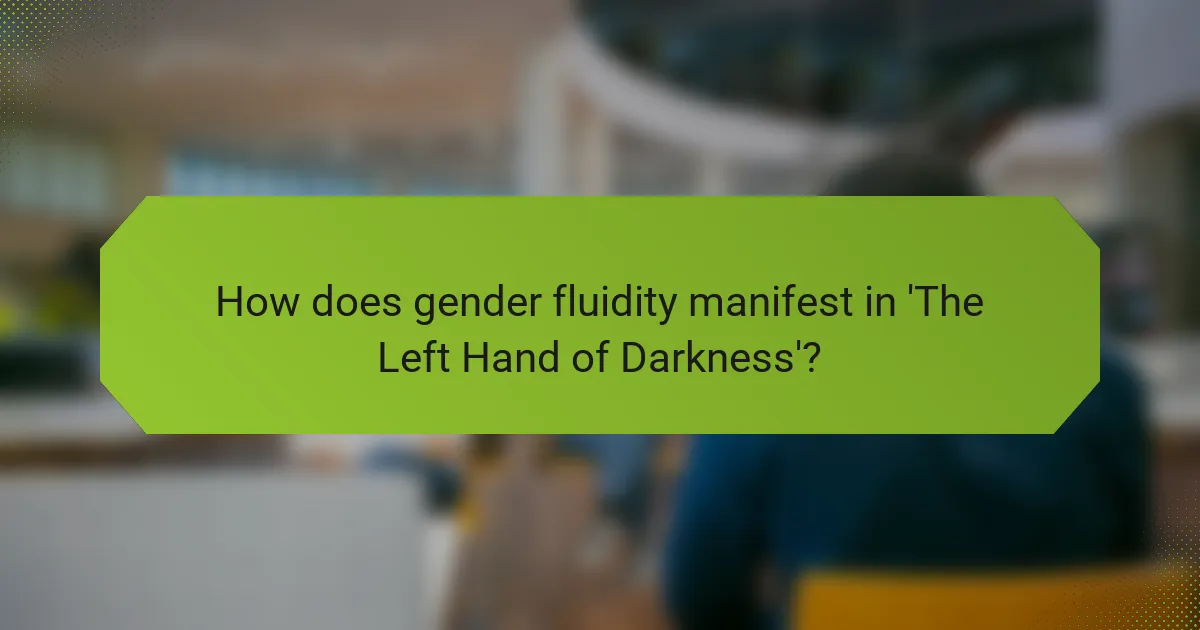
How does gender fluidity manifest in ‘The Left Hand of Darkness’?
Gender fluidity in “The Left Hand of Darkness” manifests through the androgynous nature of the Gethenians, who can change their gender. This fluidity challenges traditional gender norms and highlights cultural conflict. Gethenians embody both male and female traits, influencing their social structures and interactions. Le Guin uses this unique attribute to explore themes of identity and the impact of societal expectations on personal relationships. The narrative encourages readers to reconsider their perceptions of gender, emphasizing its complexity and variability.
What are the implications of ambisexuality in the narrative?
Ambisexuality in “The Left Hand of Darkness” challenges traditional gender norms, fostering deeper cultural understanding. It highlights the fluidity of identity, encouraging empathy and communication across differing perspectives. This narrative device prompts readers to reconsider their own perceptions of gender and relationships, ultimately promoting inclusivity. The portrayal of ambisexual characters creates a unique lens through which societal constructs can be examined, revealing the complexities of human connection beyond binary definitions.
How do the characters’ experiences reflect societal norms?
The characters’ experiences in “The Left Hand of Darkness” highlight the fluidity of gender roles and cultural expectations. Genly Ai and Estraven navigate a world where traditional norms are challenged, reflecting broader societal dynamics. Their interactions reveal how identity is shaped by cultural context rather than fixed attributes. For instance, the ambisexual nature of Gethenians undermines binary gender perceptions, prompting readers to question their own societal norms. This exploration of gender and culture emphasizes the importance of understanding diverse perspectives in a globalized world.
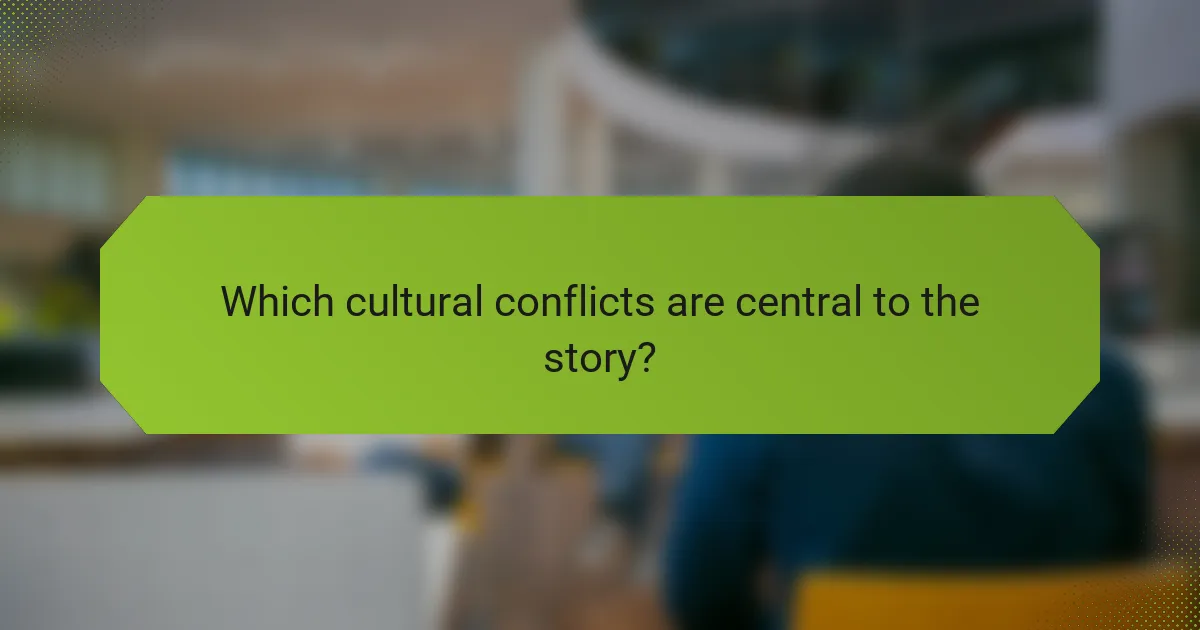
Which cultural conflicts are central to the story?
Cultural conflicts in “The Left Hand of Darkness” revolve around gender dynamics and political ideologies. The contrasting views of the Ambisexual inhabitants of Gethen challenge traditional gender roles, leading to misunderstandings and tensions with outsiders. The struggle for power between Gethen’s nations, particularly Karhide and Orgoreyn, further complicates these dynamics, highlighting themes of loyalty and betrayal. Le Guin uses these conflicts to explore broader questions of identity and society.
What role does the setting of Gethen play in these conflicts?
The setting of Gethen significantly influences the conflicts in “The Left Hand of Darkness.” Gethen’s harsh climate and unique cultural practices shape gender dynamics and social interactions. The planet’s inhabitants, who are ambisexual, challenge traditional gender roles, leading to misunderstandings and cultural clashes. This environment fosters a complex interplay between politics and personal relationships, as characters navigate loyalty and identity amidst external pressures. Gethen’s isolation and extreme conditions further exacerbate these conflicts, highlighting the impact of setting on interpersonal and societal tensions.
How do political structures influence gender dynamics?
Political structures significantly shape gender dynamics by dictating social roles and expectations. In “The Left Hand of Darkness,” Ursula K. Le Guin explores how the ambisexual society of Gethen challenges traditional gender norms. The political framework promotes fluidity in gender roles, allowing individuals to navigate identity without rigid constraints. This cultural conflict highlights the interplay between governance and societal perceptions of gender, revealing how power dynamics influence personal relationships and community cohesion.

What are the key themes related to identity in the novel?
Key themes related to identity in “The Left Hand of Darkness” include the fluidity of gender, the impact of cultural norms, and the exploration of self through relationships. Gender dynamics challenge binary classifications, showcasing a spectrum of identities. Cultural conflict reveals how differing societal values shape personal identity. The interplay between individual and collective identity emphasizes the complexity of understanding oneself in relation to others.
How does Le Guin challenge traditional gender roles?
Le Guin challenges traditional gender roles by presenting a society where individuals are androgynous. This unique attribute allows characters to explore identity beyond binary classifications. The novel illustrates how cultural norms shape perceptions of masculinity and femininity. As a result, it invites readers to reconsider their own societal constructs regarding gender.
What is the significance of kinship and family structures?
Kinship and family structures are crucial in “The Left Hand of Darkness” as they shape social dynamics and cultural interactions. The novel presents a unique perspective on gender and relationships, emphasizing how kinship influences identity and belonging. In the world of Gethen, family ties are fluid, reflecting the androgynous nature of its inhabitants. This fluidity challenges traditional notions of gender roles, fostering a deeper understanding of human connection. As a result, kinship emerges as a central theme, highlighting the complexities of cultural conflict and cooperation.
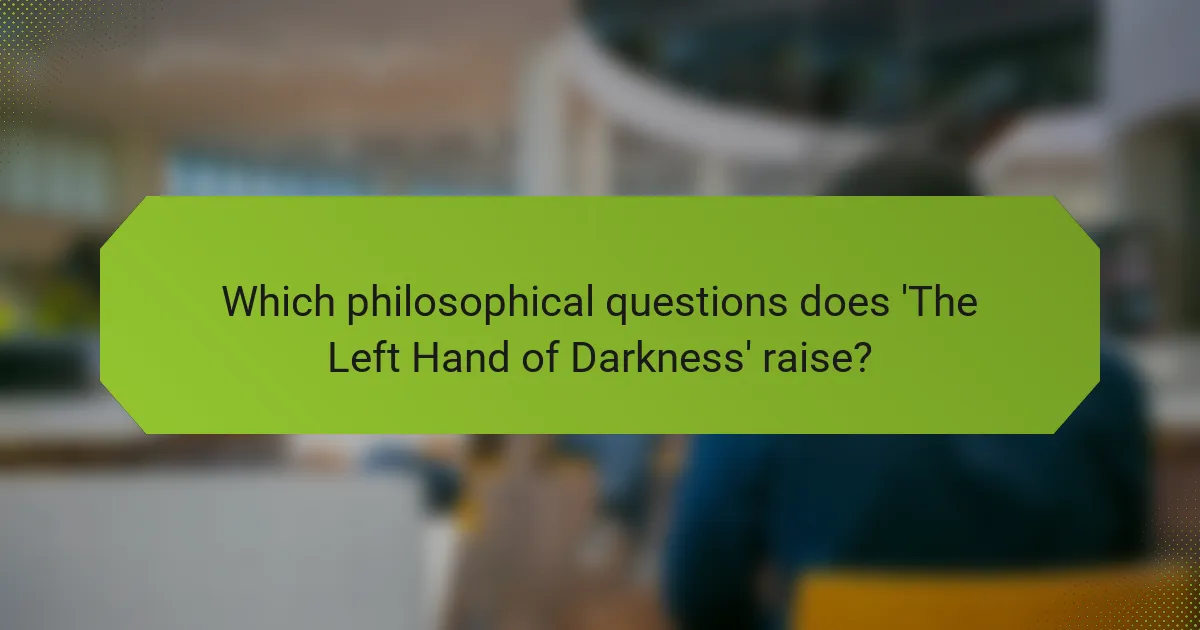
Which philosophical questions does ‘The Left Hand of Darkness’ raise?
“The Left Hand of Darkness” raises profound philosophical questions about gender, identity, and cultural relativism. It challenges the binary understanding of gender by presenting a society where individuals can change their gender, prompting reflections on the nature of gender itself. The narrative explores the implications of cultural differences on communication and understanding, questioning the universality of values and ethics. Additionally, it delves into themes of loyalty and betrayal, examining how personal relationships are influenced by societal norms. These inquiries encourage readers to reconsider their assumptions about gender dynamics and the complexities of human relationships.
How does the concept of duality affect character relationships?
The concept of duality profoundly shapes character relationships in “The Left Hand of Darkness” by challenging traditional gender norms. Characters navigate a society where gender fluidity complicates interactions, fostering deeper connections. For example, Genly Ai’s evolving relationship with Estraven illustrates how understanding duality leads to empathy and collaboration. This dynamic reveals how cultural conflict arises from differing perceptions of gender roles, ultimately enhancing character development and narrative complexity.
What ethical dilemmas are presented through cultural misunderstandings?
Cultural misunderstandings in “The Left Hand of Darkness” present ethical dilemmas related to gender perception and identity. These dilemmas arise from the contrasting views of gender roles between Earth and Gethen. Characters face conflicts when encountering the ambisexual nature of Gethenians, challenging their preconceived notions of masculinity and femininity.
The protagonist, Genly Ai, grapples with his biases, leading to ethical questions about acceptance and judgment. As a result, the narrative highlights the importance of empathy in understanding diverse cultures. Misinterpretations can lead to mistrust and conflict, underlining the need for open communication.
Furthermore, the portrayal of gender fluidity raises unique ethical considerations about societal norms. The story encourages readers to reflect on their own cultural biases and the impact of misunderstandings. Ultimately, these dilemmas emphasize the significance of cultural sensitivity in fostering mutual respect.

What are the unique narrative techniques used by Le Guin?
Ursula K. Le Guin employs unique narrative techniques in “The Left Hand of Darkness,” including shifting perspectives, intricate world-building, and the exploration of gender fluidity. These techniques deepen the themes of cultural conflict and identity. Le Guin’s use of the third-person omniscient narrator allows for a multifaceted exploration of characters and their experiences. The novel’s setting on the planet Gethen highlights the contrast between rigid gender norms and the fluidity of the Gethenian society. This narrative choice fosters a rich dialogue on the nature of humanity and social constructs.
How does the use of language shape the reader’s understanding of gender?
The use of language significantly shapes the reader’s understanding of gender in “The Left Hand of Darkness.” Le Guin employs a unique linguistic approach that challenges traditional gender binaries. By creating a society where gender is fluid, she prompts readers to reconsider their own perceptions of gender roles. This narrative technique fosters empathy and deeper insight into cultural conflict surrounding gender identity. The nuanced language used in character interactions highlights the complexities of gender dynamics, encouraging readers to engage with themes of identity and societal norms.
What narrative perspective is employed and how does it impact the story?
The narrative perspective in “The Left Hand of Darkness” is primarily third-person limited, focusing on Genly Ai’s experiences. This perspective shapes the story by allowing readers to explore the complexities of gender dynamics and cultural conflict through Genly’s eyes, emphasizing his misunderstandings and growth. The limited viewpoint highlights the stark contrasts between his culture and that of the Gethenians, fostering empathy and deeper engagement with the themes of identity and belonging. As a result, the narrative perspective enhances the reader’s understanding of the novel’s exploration of androgyny and societal norms.
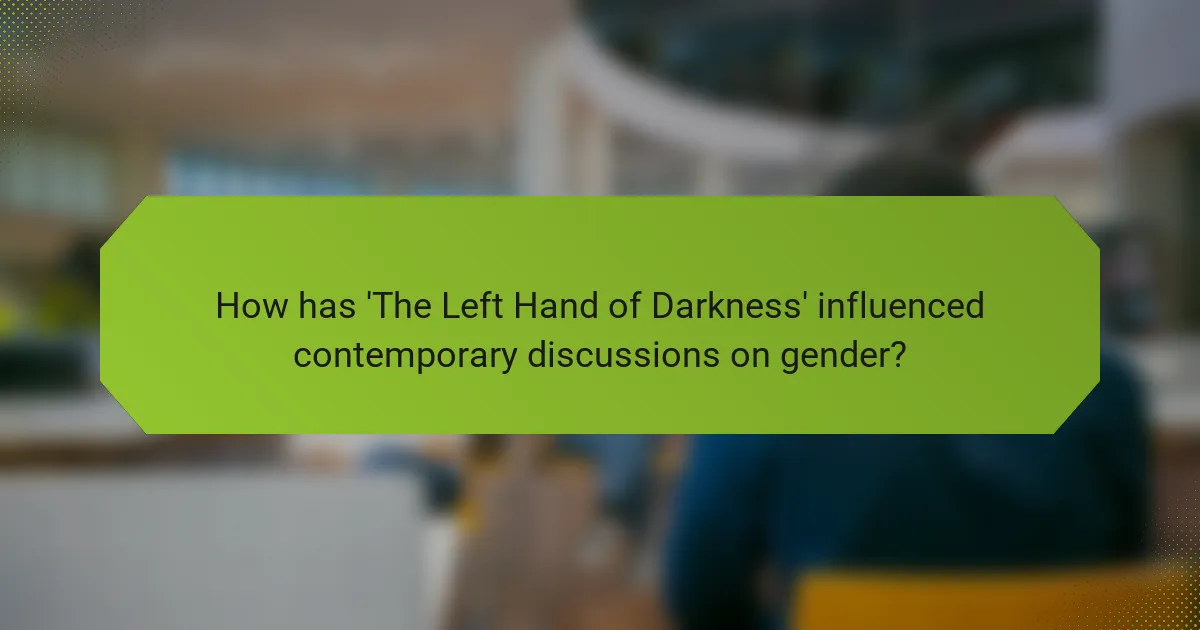
How has ‘The Left Hand of Darkness’ influenced contemporary discussions on gender?
“The Left Hand of Darkness” has significantly influenced contemporary discussions on gender by challenging binary perceptions. The novel presents a society where gender is fluid, prompting readers to reconsider traditional gender roles and identities. This exploration has inspired debates on gender inclusivity and representation in modern literature and culture. Le Guin’s work serves as a foundational text for examining how social constructs shape our understanding of gender, encouraging a more nuanced perspective in today’s discussions.
What parallels can be drawn between the novel and modern gender debates?
Ursula K. Le Guin’s “The Left Hand of Darkness” parallels modern gender debates by exploring fluidity in gender identity. The novel’s ambisexual characters challenge binary views, reflecting contemporary discussions on gender spectrum and identity. Both contexts emphasize the social constructs of gender roles and the impact of culture on individual identity. Le Guin’s depiction of the planet Gethen illustrates how societal norms shape perceptions of masculinity and femininity, similar to current dialogues surrounding gender expression. This narrative invites readers to reconsider their understanding of gender in a rapidly evolving societal landscape.
How do different cultures interpret the themes of the book?
Different cultures interpret the themes of “The Left Hand of Darkness” through their distinct gender norms and societal structures. For instance, societies with rigid gender roles may struggle with the book’s fluidity of gender identity. In contrast, cultures that embrace diversity might find resonance in the novel’s exploration of androgyny and companionship. The theme of cultural conflict is often viewed through the lens of historical and contemporary power dynamics, highlighting how differing worldviews shape interactions. Ultimately, these varied interpretations reflect each culture’s values and beliefs about gender and relationships.
What lessons can be learned from the book’s exploration of diversity?
The exploration of diversity in “The Left Hand of Darkness” teaches valuable lessons about empathy, understanding, and the complexity of identity. The book illustrates how cultural differences can lead to conflict but also foster deeper connections. It emphasizes the importance of viewing gender and society through multiple lenses, encouraging readers to challenge their assumptions. Additionally, the narrative highlights the need for open dialogue in bridging divides, promoting a more inclusive perspective on humanity.
What are best practices for engaging with the themes of the novel?
Engaging with the themes of “The Left Hand of Darkness” requires an understanding of its complex gender dynamics and cultural conflict. Focus on the following best practices:
1. Analyze character relationships to uncover gender fluidity.
2. Explore the impact of cultural norms on personal identity.
3. Discuss the significance of political systems in shaping societal roles.
4. Examine the use of language as a tool for understanding and miscommunication.
5. Reflect on the implications of empathy and connection across differences.
